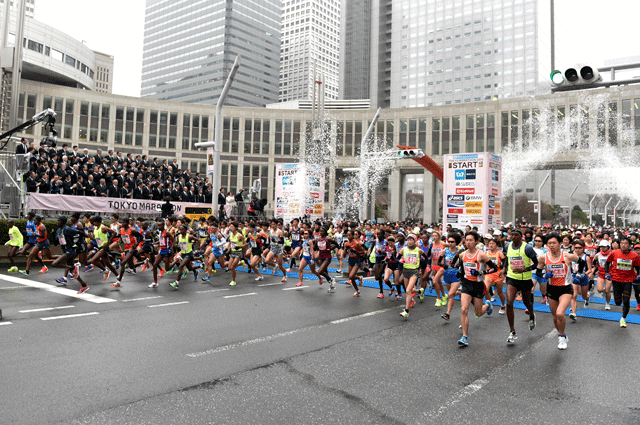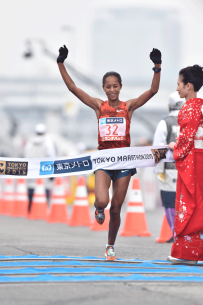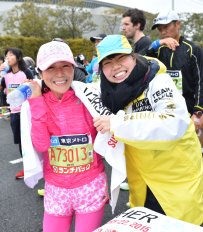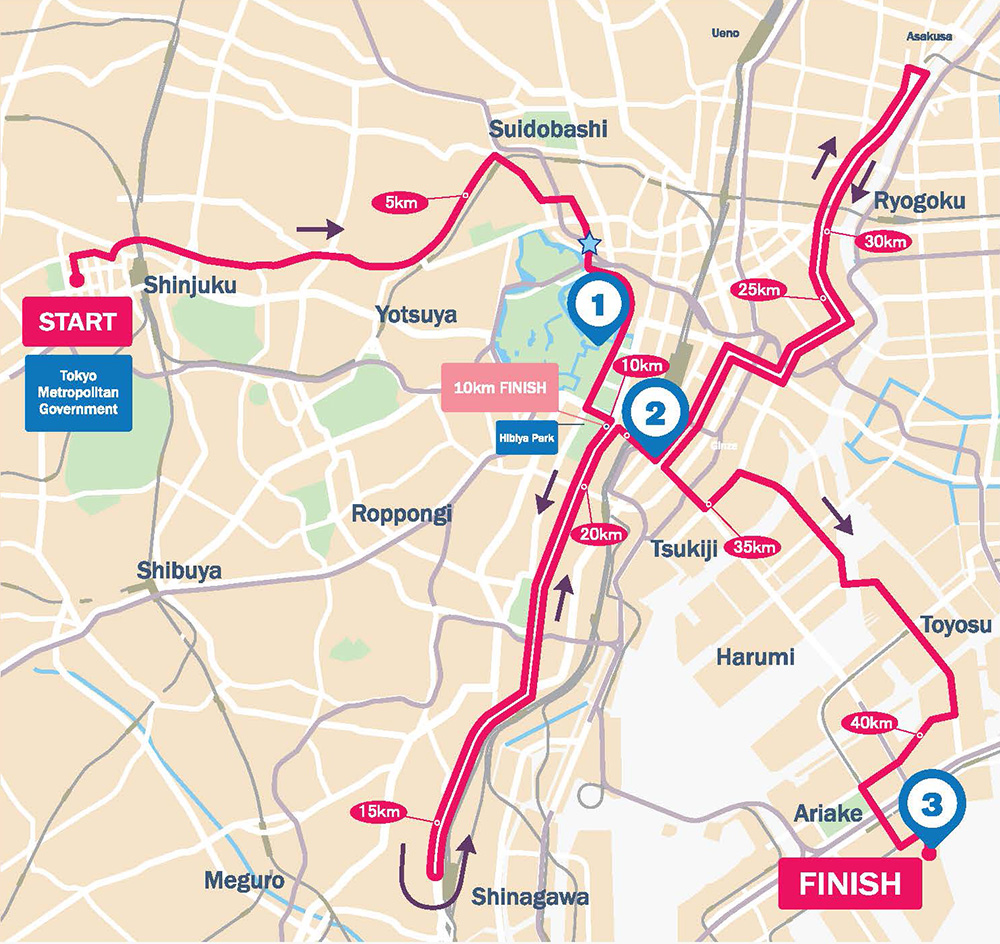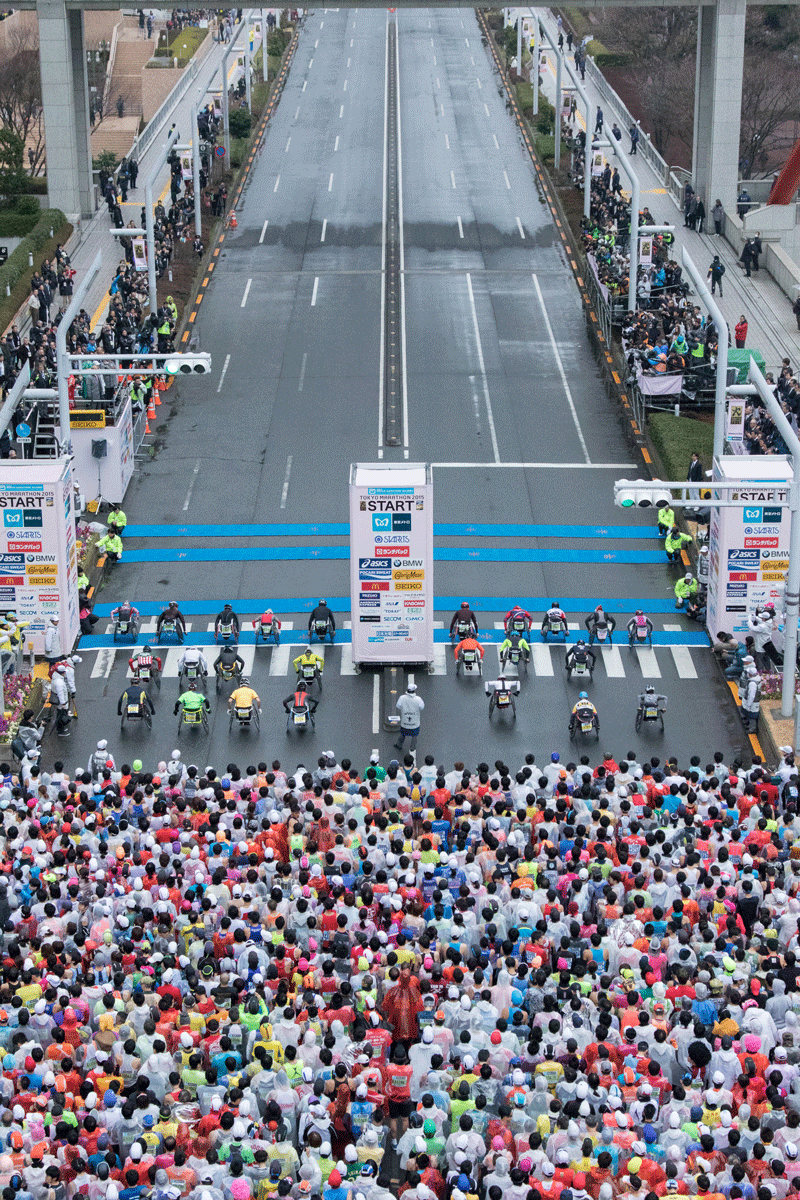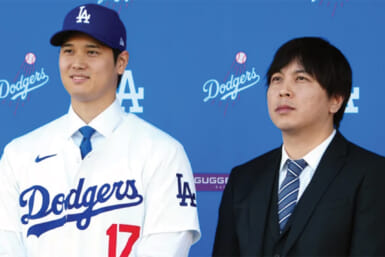After sprinting into position as one of the world’s top long-distance events, the Tokyo Marathon is preparing to set new standards for competition in its 10th year.
By Alec Jordan
A quintessential demonstration of training, resilience, and determination, the marathon is an event that demands an intense pace from elite runners over the length of its 42.195km (26.2 mile) course and from less experienced runners, sometimes just the willingness to put one foot in front of the other.
The Tokyo Marathon was first launched in 2007, but elite marathons have been held in the world’s largest city since 1979. This impressive pedigree quickly made it one of the top runs on the world marathon circuit, and by its sixth year, it had joined Boston, London, Chicago, New York, and Berlin in the Abbott World Marathon Majors, a yearly series of six races that draws the world’s best long-distance competitors.
A Race for Elites and Amateurs Alike
Standouts in a strong international field this year include Kenya’s Emmanuel Mutai, Dickson Chumba (the course record holder), and Bernard Kipyego, as well as Feyisa Lilesa (Ethiopia) and Stephen Kiprotich (Uganda). Two of the best Japanese male runners to look for are Masato Imai and Arata Fujiwara. On the women’s side is a strong Ethiopian contingent, including last year’s winner Birhane Dibaba, Aberu Kebede, and Shure Demise, with Kenya’s Edna Kiplagat in the pole position. Hiroko Yoshitomi and Yukiko Okuno lead the pack of Japan’s elite female runners. The Tokyo Marathon is an Olympic qualifying event for the Japanese men, so there will be a little extra on the line for some members of the pack.
Another group to pay attention to are some of the speedier competitors on the road: the wheelchair marathoners. The Tokyo Marathon course is generally flat, so it is an ideal place to break records—if the weather permits. This year marks the first time that international elites have been invited to compete in the Tokyo Wheelchair Marathon. Domestic athletes like Hiroyuki Yamamoto and Kota Hokinoue will have a berth in the 2016 Paralympics at stake and are going up against a field that includes international stars such as World Champion Joshua George (USA) and Ernst van Dyk (South Africa), a multiple Paralympic wheelchair event medalist and 10-time winner of the Boston Wheelchair Marathon. Meanwhile, on the women’s side, eight-time Tokyo Marathon winner Wakako Tsuchida will be up against Tatyana McFadden from the US, who won in Chicago, Boston, New York, and London last year.
Along with the world-class runners who are vying for top positions in the race itself and the Abbott World Marathon Majors series, the Tokyo Marathon has also become an place for serious amateurs and recreational marathoners to hit their stride. Over the years, long-distance running has been on the rise in Japan, and marathons are now held around the country. In order to support this grassroots long-distance movement, Tokyo Marathon launched the RUN as ONE program last year, which gives promising runners a streamlined entry into the Marathon. Beginning this year, this program will be expanded to include semi-elite marathoners from around the world. And given the popularity of the race—more than 300,000 apply for 37,000 spots—the Tokyo Marathon draws a huge field of amateur marathoners (as well as, from what we hear, a few cleverly costumed runners) every year.
Run by Volunteers
Read up on participants’ reports from previous Tokyo Marathons and you will find plenty of stories about hitting the wall and making the push for personal bests. However, another common thread in stories about the event is that it is well run, thanks in no small part to a veritable army of enthusiastic volunteers. This year, expect about 10,000 of them (including 700 foreign language speakers) who assist in every aspect of the race, from distributing drinks and snacks along the route to helping keep the course almost spotlessly clean and making sure that competitors’ luggage is waiting for them once the run is done.
In addition to the volunteers who are helping out in traditional roles in the lead up to the competition, there are also a wide variety of performances taking place alongside the streets of the Marathon course: runners will be buoyed along by taiko drummers, bands, and choirs, school cheerleading groups, and more. Combine this with close to 1.5 million spectators who line the course, yelling out a spirited “Ganbare!” to everyone who runs by, and you’ll feel like a good part of the city has come together to help everyone cross the finish line.
The 2016 Tokyo Marathon takes place on Sunday, Feb. 28. Start time for runners is 9:10 am.
For more details, visit www.marathon.tokyo/en
Tokyo Marathon Route Map
1. Imperial Garden
A favorite spot for runners who jog alongside the moat of this Tokyo landmark throughout the year, it’s a natural location for spectators to get set up to watch the runners in the early stages of the race go by.
2. Ginza
Many participants recall the billboards and fancy store fronts of glitzy Ginza as something that helped keep them upbeat during the final kilometers of the marathon. It’s also one of the areas where the course makes a sharp turn, making it a thrilling place to watch the wheelchair competitors.
3. Tokyo Big Sight
There’s nothing like seeing the runners crossing the finish, whether they’re coming in at world-class pace or setting their own personal bests. Expect plenty of crowds, and a warm atmosphere—rain or shine.
Photos courtesy of the Tokyo Marathon Foundation

